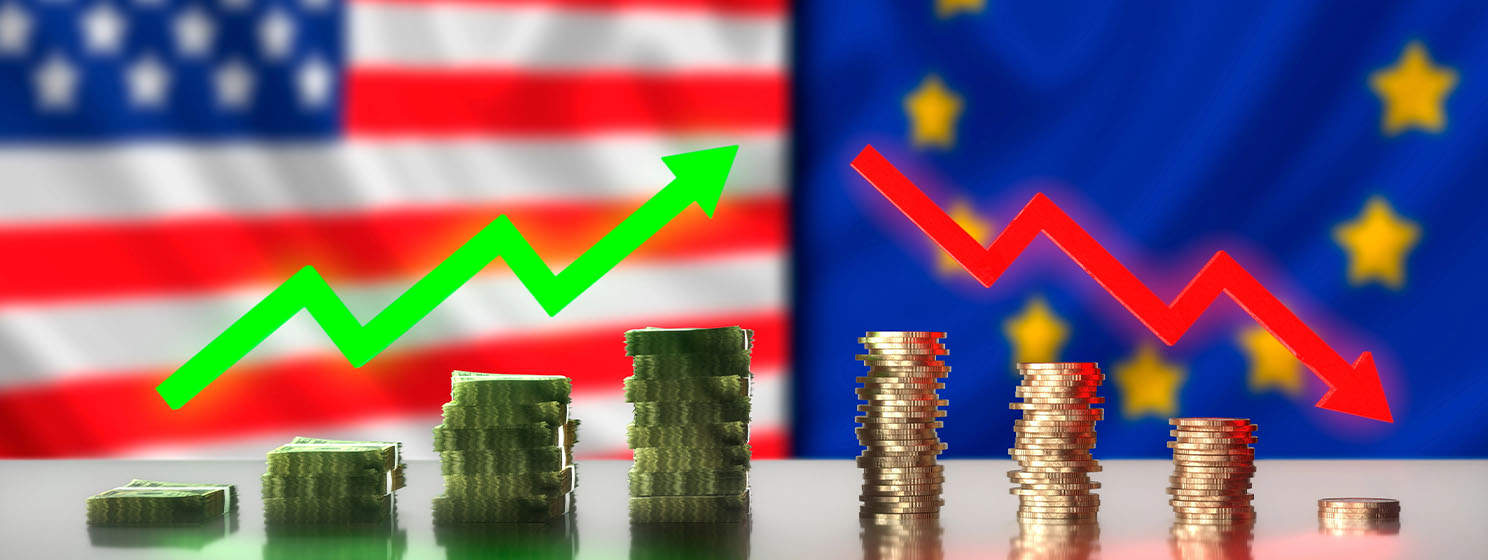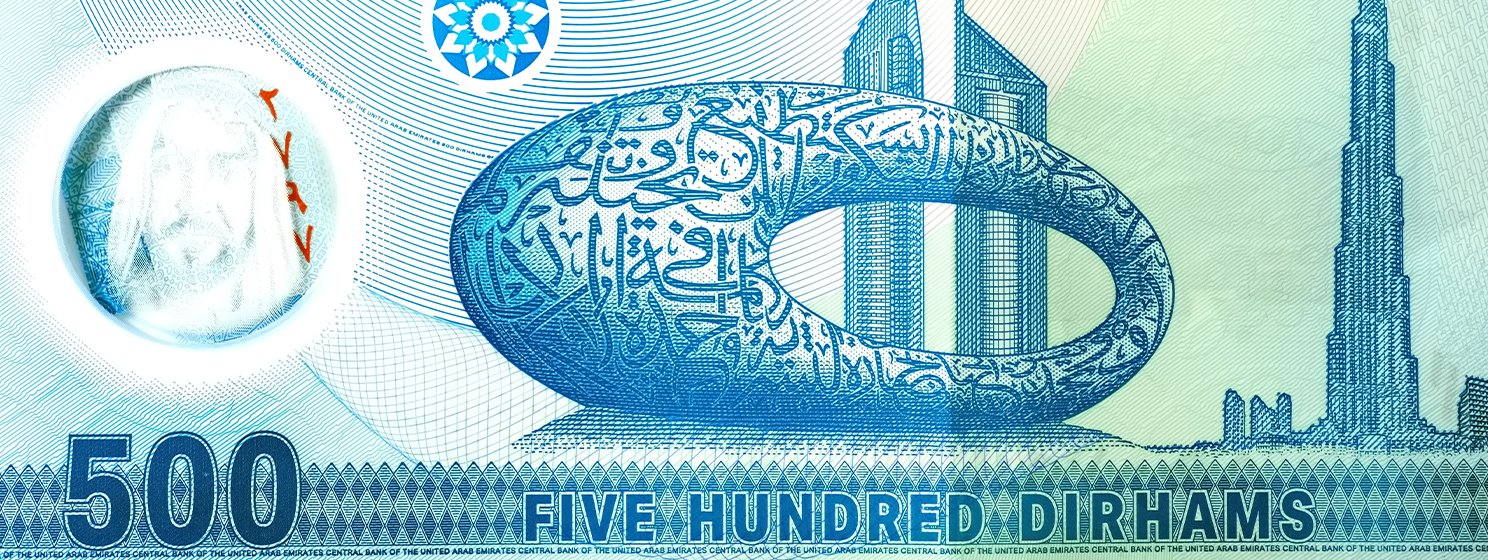|
Getting your Trinity Audio player ready...
|
The rise of dollar-denominated stablecoins is spoiling Europe’s plans to shore up its euro currency, while China’s tentative stablecoin embrace is being exploited by mainland scammers.
- EU central bank warns of dollar-denominated stablecoin threat
- Deutsche Bank euro-denominated stablecoin launches
- China pumps brakes on stablecoin enthusiasm
- Coinbase revives ‘bootstrap’ fund to boost USDC
- Tether CEO not sure if he likes Circle CEO
On July 31, European Central Bank (ECB) market infrastructure & payments adviser Jürgen Schaaf released a blog post warning of the threat that dollar-denominated stablecoins pose to European monetary sovereignty and financial stability. Schaaf believes “Europe must take decisive action to emerge stronger from these turbulent times.”
Schaaf defines stablecoins as “a bridge between volatile digital assets and traditional monetary systems … functioning as a blockchain-based money equivalent which is liquid, globally transferable, and perceived as a stable and solid store of value.”
Schaaf notes that dollar-denominated tokens account for 99% of the overall stablecoin market cap of $271 billion, most of which consists of Tether’s USDT and Circle’s (NASDAQ: CRCL) USDC. Meanwhile, the market cap of euro-denominated stablecoins like Circle’s EURC and Stasis Euro’s EURS represents only ~0.2% of that total. Tether discontinued support for its EURT stable last year as a response to the European Union imposing its Markets in Crypto-Assets Regulation (MiCA).
Schaaf spotlights the “potentially far reaching” impact of the “emerging regulatory divergence” between the suddenly stablecoin-positive U.S.—which approved the GENIUS Act last month—and Europe’s stricter MiCA framework. In the United States, tradfi payment giants like Visa (NASDAQ: V) and Mastercard (NASDAQ: MA) have begun integrating stablecoins into their operations, while a growing number of corporate giants are exploring the possibility of doing likewise.
Schaaf believes that if dollar-denominated stables make further encroachments on euro territory, “whether for payments, savings or settlement, the ECB’s control over monetary conditions could be weakened.” Schaaf notes that the experience of dollarized economies shows that this process can be hard to reverse.
Further flows of dollar-denominated stablecoins into areas like cross-border transactions and tokenized settlements “may cement their early dominance.” Barring the arrival of “credible euro alternatives,” the U.S. will enjoy “strategic and economic advantages, allowing it to finance its debt more cheaply while exerting global influence.” Europe could face “higher financing costs relative to the United States, reduced monetary policy autonomy and geopolitical dependency.”
Schaaf urges the EU to offer more support to “properly regulated” euro-denominated stables that “serve legitimate market needs,” including “reinforc[ing] the international role of the euro.”
Schaaf sees the digital euro as “a robust line of defence of European monetary strategy” but believes “stronger global coordination on stablecoin regulation is pivotal … If we forgo a common approach, we risk fuelling instability, regulatory arbitrage and global U.S. dollar dominance.”
Schaaf isn’t the only one sounding the alarm. A few weeks prior to his report, the pan-European Centre for Economic Policy Research (CEPR) warned of the threat posed by America’s “crypto-mercantilism.” This threat includes limiting the monetary sovereignty of the EU’s economic trade partners, particularly those with “low levels of financial inclusion and unstable currencies” that make their economies more susceptible to dollarization.
The fact that many technology giants call the U.S. home is contributing to the spread of dollar-denominated stablecoins, as the U.S. appears eager to “leverage the strength of its crypto industry as well as its dominance in online commerce and social media.”
The CEPR report didn’t advise the EU to follow America’s lead by weakening MiCA’s standards. Instead, it suggests that policymakers “actively support payment multilateralism by facilitating cross-border transactions between central bank digital currencies (CBDCs) and fast payment systems.”
The CEPR went as far as to suggest that the ECB should “keep a close eye on the use of dollar-pegged stablecoins in the EU and limit their circulation if necessary.”
Deutsche Bank launches EURAU
Despite opinions that this stablecoin dollar v. euro ship hasn’t yet sailed, three different ECB officials told Politico that the organization’s Governing Council ‘remains skeptical’ of welcoming stablecoins into traditional finance. This appears to echo the recent position of the Bank for International Settlements (BIS) that stablecoins “fall short of the requirements to be the mainstay of the monetary system” and “may at best serve a subsidiary role” in global finance.
Still, some EU institutions are giving it the old college try. July 31 saw the official launch of EURAU, Germany’s first MiCA-compliant/BaFin-regulated euro-denominated stablecoin. EURAU is the product of AllUnity, the joint venture of Deutsche Bank’s (NASDAQ: DB) asset management wing DWS, Galaxy Digital, and market-maker Flow Traders.
EURAU is an Ethereum ERC-20 token, but it will launch on other networks later this year. Bullish Europe—the EU offshoot of Bullish Global (NASDAQ: BLSH), which debuted on the Nasdaq on August 13—is the first exchange to offer EURAU trading.
Echoing the wider EU concerns, AllUnity CEO Alexander Höptner called EURAU “a significant step forward for Europe’s digital financial infrastructure and financial sovereignty.”
China rethinks stablecoin hype
Dollarization concerns aren’t limited to Europe, as China has indicated a desire to launch an ‘offshore’ yuan-based stablecoin to boost the use of its domestic currency abroad, particularly in nations in which Belt & Road Initiative projects are underway.
Last month, state-run media in Shanghai reported on an offshore yuan stablecoin project involving Chinese blockchain firm Conflux, digital security firm Eastcompeace Technology Co, Hong Kong fintech Anchor X, and digital wallet TokenPocket. However, that report appears to have been deleted as the link now redirects to the Shanghai municipal government’s home page.
Last week, Bloomberg reported that leading Chinese brokerages and think tanks had received ‘guidance’ from financial regulators to cancel stablecoin-related seminars and refrain from issuing stablecoin-based research and/or making public comments on stablecoins.While neither the China Securities Regulatory Commission nor the People’s Bank of China (PBoC) would comment on the report, China’s leadership reportedly wants to cool the buzz around stablecoins that has surged in recent months.
Ironically, this fire was fanned by PBoC governor Pan Gonsheng, who in June told a Shanghai forum audience that stablecoins were “reshaping the traditional payment infrastructure” and China couldn’t afford to ignore these changes.
In July, the director of Shanghai’s State-Owned Assets Supervision and Administration Commission (SASAC) declared that regulators need to show “greater sensitivity to emerging technologies and enhanced research into digital currencies.”
But Reuters reported last week that the post from SASAC’s WeChat account that contained details of this speech appears to have been deleted. And the Financial Times reported this week that, behind the scenes, financial regulators have been reminding stakeholders that stablecoins cannot be allowed to facilitate evasion of China’s strict capital controls.
This sudden skittishness is reportedly due to a rush of illicit fundraising activities in mainland China. According to official channels, scammers have “taken advantage of the fact that the public’s understanding of new financial concepts is still incomplete.” Anyone with knowledge of entities “engaging in illegal fundraising activities under the guise of investing in stablecoins” is asked to report them to local authorities.
On August 11, state-run media reported that China Rare Earth Group had refuted rumors that it had teamed up with the PBoC and Ant Group on a “rare earth yuan stablecoin.” Ant Group issued a similar statement, urging the public to exercise caution when pitched on digital asset projects.
Hong Kong has led China’s embrace of digital assets this year, issuing 11 exchange licenses and over 40 other permits allowing companies to trade digital assets on behalf of clients.
Hong Kong also passed its Stablecoin Ordinance in May that took effect on August 1, but the Hong Kong Monetary Authority (HKMA) recently warned that it plans to issue only “a handful of stablecoin issuer licenses,” at least, during the rollout’s initial phase. Five entities, including banks and online retailers, were selected to participate in the city-state’s stablecoin sandbox, but the first licenses aren’t expected to be issued until early 2026.
The Ordinance doesn’t single out a specific currency in which HKMA-approved stablecoins must be based, saying only that they must be linked to an “official currency.” So far, the HKMA says applicants have expressed interest in USD and Hong Kong Dollars (HKD), but HKD stables can only be issued outside Hong Kong.
Coinbase revives stablecoin bootstrap fund to boost USDC
Stateside, Bernstein analysts have pegged Circle as most likely to become the dominant stablecoin network. Despite USDT’s $165 billion market cap dwarfing USDC’s $66.4 billion, the analysts claim “the most liquid, regulated stablecoin will win.”
Circle easily has the claim on ‘most regulated,’ at least, compared to Tether, which may give USDC a U.S. advantage. But it remains to be seen whether Circle can make up ground on Tether’s significant headstart on the global stage.
To boost their respective profiles, both Circle and Tether are preparing to launch their own stable-specific payment networks. Other players are building out similar infrastructure in a bid to upend this stablecoin duopoly.
Enter the Coinbase (NASDAQ: COIN) digital asset exchange, which has a serious financial incentive to see Circle prevail in this fight. On August 12, Coinbase announced it was launching “a second Stablecoin Bootstrap Fund, designed to deepen stablecoin liquidity in DeFi [decentralized finance] capital markets, managed by Coinbase Asset Management.”
The first Bootstrap Fund started in 2019 as a way to “seed onchain liquidity for USDC across a variety of blue chip DeFi protocols.” This helped USDC become the primary DeFi stablecoin on networks like Ethereum, Base, Solana, Hyperliquid, Sui, Aptos and others.
The new Fund wants to grow that list, so its first placements are being executed on Ethereum-based lenders Aave and Morpho, plus Solana-based trading platforms Kamino and Jupiter. The scale of the second Fund’s investment wasn’t disclosed.
Tether’s CEO will shake hands with Circle’s CEO, but does he like him?
Tether and Circle are fierce rivals, with little love lost between them. In a new appearance on the Crypto in America podcast this week, Tether CEO Paolo Ardoino was asked about this rivalry, specifically reports that Ardoino and Circle CEO Jeremy Allaire had studiously avoided each other at the White House, where both were invited to witness President Trump signing the GENIUS Act into law last month.
Ardoino interjected to say “that’s not correct, we shook hands.” Pressed as to whether that meant the two stablecoin execs “like each other,” Ardoino hesitated before saying only that “we are very different companies.”
Ardoino also revealed slightly more details on Tether’s plans to launch a new U.S.-focused stablecoin. Ardoino said the company has picked the name and created “a beautiful logo,” but declined to share either with the hosts.
Ardoino said “hopefully” all would be revealed by “late September, and then do the first transaction by the end of the year.” Ardoino added that the U.S.-facing product would be “focused more on payments and chequing accounts rather than being the dollar for emerging markets.”
Watch: Bringing the Metanet to life with Teranode

 11-30-2025
11-30-2025 





